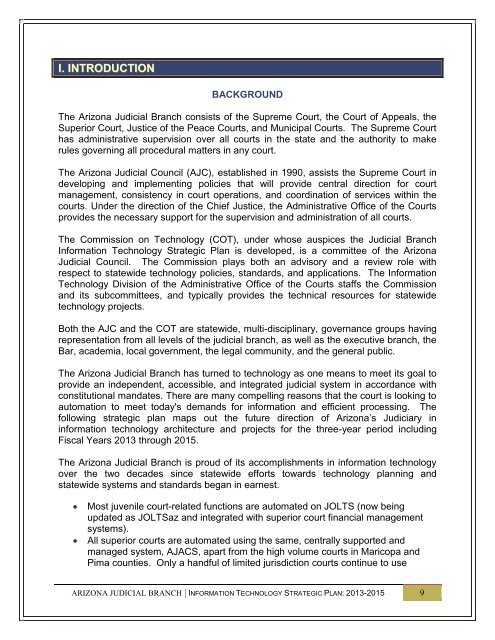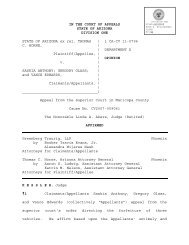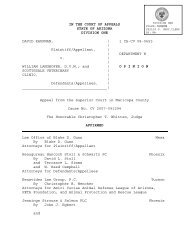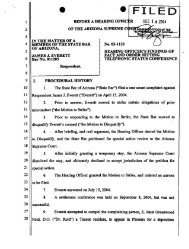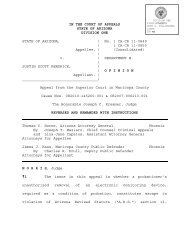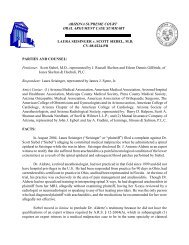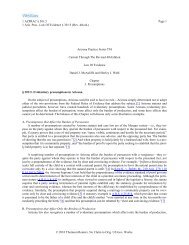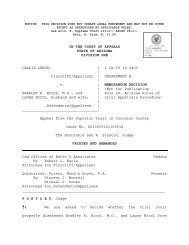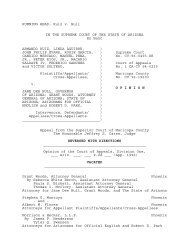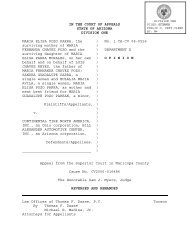Print Version - Arizona Judicial Department
Print Version - Arizona Judicial Department
Print Version - Arizona Judicial Department
You also want an ePaper? Increase the reach of your titles
YUMPU automatically turns print PDFs into web optimized ePapers that Google loves.
I. INTRODUCTION<br />
BACKGROUND<br />
The <strong>Arizona</strong> <strong>Judicial</strong> Branch consists of the Supreme Court, the Court of Appeals, the<br />
Superior Court, Justice of the Peace Courts, and Municipal Courts. The Supreme Court<br />
has administrative supervision over all courts in the state and the authority to make<br />
rules governing all procedural matters in any court.<br />
The <strong>Arizona</strong> <strong>Judicial</strong> Council (AJC), established in 1990, assists the Supreme Court in<br />
developing and implementing policies that will provide central direction for court<br />
management, consistency in court operations, and coordination of services within the<br />
courts. Under the direction of the Chief Justice, the Administrative Office of the Courts<br />
provides the necessary support for the supervision and administration of all courts.<br />
The Commission on Technology (COT), under whose auspices the <strong>Judicial</strong> Branch<br />
Information Technology Strategic Plan is developed, is a committee of the <strong>Arizona</strong><br />
<strong>Judicial</strong> Council. The Commission plays both an advisory and a review role with<br />
respect to statewide technology policies, standards, and applications. The Information<br />
Technology Division of the Administrative Office of the Courts staffs the Commission<br />
and its subcommittees, and typically provides the technical resources for statewide<br />
technology projects.<br />
Both the AJC and the COT are statewide, multi-disciplinary, governance groups having<br />
representation from all levels of the judicial branch, as well as the executive branch, the<br />
Bar, academia, local government, the legal community, and the general public.<br />
The <strong>Arizona</strong> <strong>Judicial</strong> Branch has turned to technology as one means to meet its goal to<br />
provide an independent, accessible, and integrated judicial system in accordance with<br />
constitutional mandates. There are many compelling reasons that the court is looking to<br />
automation to meet today's demands for information and efficient processing. The<br />
following strategic plan maps out the future direction of <strong>Arizona</strong>’s Judiciary in<br />
information technology architecture and projects for the three-year period including<br />
Fiscal Years 2013 through 2015.<br />
The <strong>Arizona</strong> <strong>Judicial</strong> Branch is proud of its accomplishments in information technology<br />
over the two decades since statewide efforts towards technology planning and<br />
statewide systems and standards began in earnest.<br />
Most juvenile court-related functions are automated on JOLTS (now being<br />
updated as JOLTSaz and integrated with superior court financial management<br />
systems).<br />
All superior courts are automated using the same, centrally supported and<br />
managed system, AJACS, apart from the high volume courts in Maricopa and<br />
Pima counties. Only a handful of limited jurisdiction courts continue to use<br />
ARIZONA JUDICIAL BRANCH | INFORMATION TECHNOLOGY STRATEGIC PLAN: 2013-2015 9


